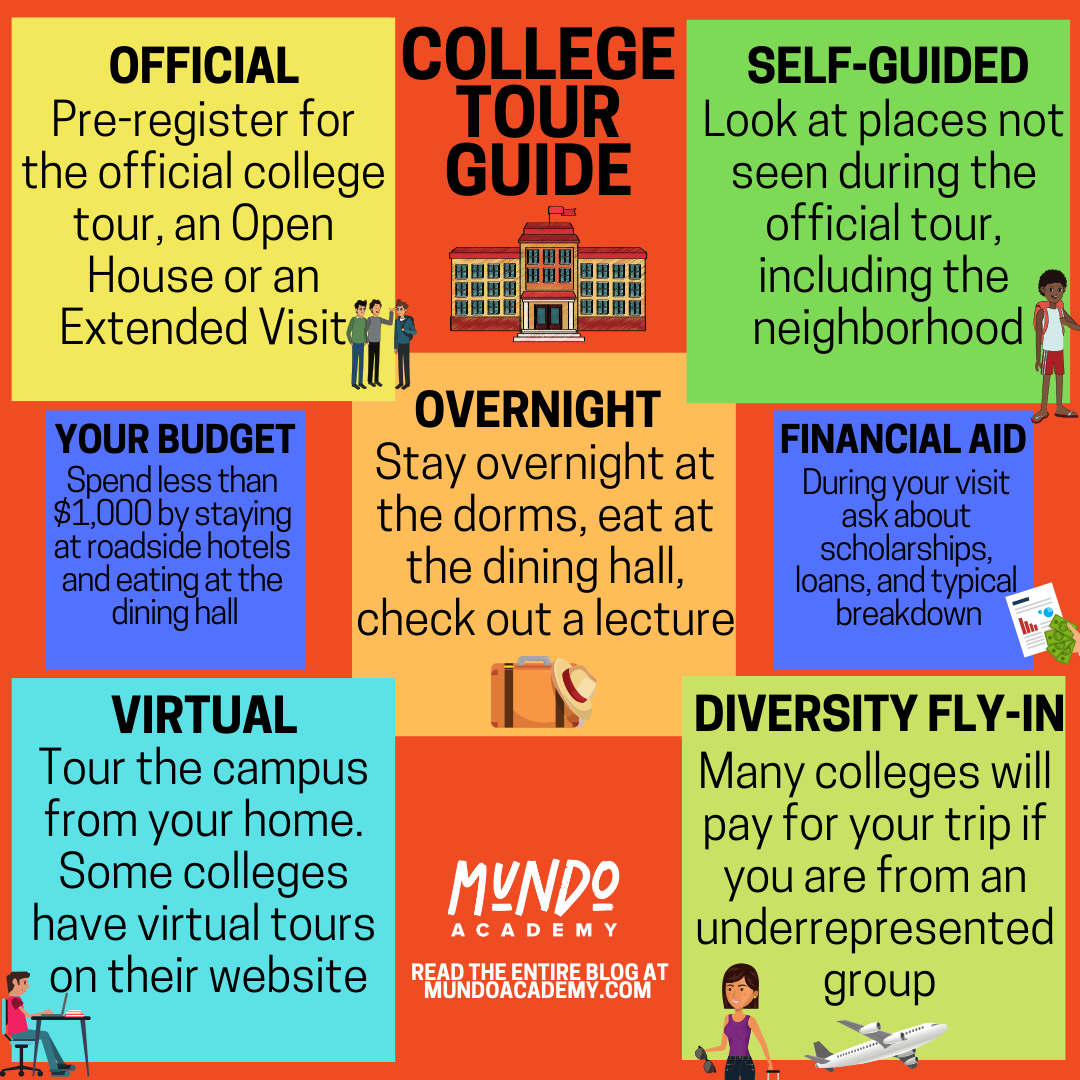
It’s an exciting time: you’re touring your prospective colleges. Your hard work has paid off, but now it’s time to make a decision. Here’s a quick and easy guide to make the most of your time and budget—plus some key points to consider when shopping around.
Where to Start
Start by pre-registering for the official college tours offered to prospective students. These official walking tours are led by undergraduates and include an informational session about campus life, academics, and financial aid. You may also opt to attend an open house, which is similar to an official tour but provides more in-depth interactions with faculty. This is the college’s opportunity to provide insights on different academic programs, clubs and support services. If you can register for one (spaces fill up quickly) you may also decide to do an extended visit to meet with a professor or admissions officer and attend a class.
After your official tour is over, create your own college tour to see things and people you may have missed during the guided tour. Self-guided tours give you a different perspective and are equally as important in your decision making process. Make your way over to the building that houses the classes in your major. You’ll be spending a lot of time there for the next four years. Look at the labs and the technology you’ll have access to and peek into the classrooms to look at class sizes. Attend a lecture to get a feel of the intellect and vibrancy of class culture.
Next, take a look at places where you’ll be spending your leisure time such as: lounging areas, outdoor areas, student centers/unions, dining halls, religious and cultural institutions, the career center. Also look into places that fit your individual preferences, such as the music hall if you play an instrument or a fraternity/sorority house if you plan on joining one. Don’t forget to tour the surrounding areas to get a feel of the neighborhood and things to see and do off-campus.
Other Types of Tours
You may also want to consider other types of college tours such as virtual tours, overnight and diversity fly-in visits. If your budget is low, you may want to view a school from the comfort of your own home. Many colleges offer a tour from a first-person perspective virtually. This is a good option for those who can’t afford to travel. However, consider reserving these virtual tours for a small number of schools since they do not give you a sense of the overall feel and culture of the school.
If you do have the budget, it is well worth it to spend some of it on overnight visits. You can register to stay with a current student in order to experience campus life firsthand. In this process, you may even attend classes with your host, eat meals on campus, and get a feel of the social ambiance of the campus. Lastly, if you are a student from an underrepresented group or if you have a low-income background, many colleges offer diversity fly-in programs where the college pays for you to visit their campus and stay overnight a few days. You’ll meet with admissions and financial aid counselors and stay in the dorms. Colleges are really making an effort to diversify their student body through these programs, so take full advantage of them if you fall into this group.

Set a Budget
If you are not part of this group and do not have unlimited funds, you’ll need to consider setting a budget for your college tours. About 42.8% of college freshman have said that visiting their prospective colleges influenced their final decision to attend. We know that these visits are important, but be savvy about how you spend your funds. After all, you’ll need some spending money for books, room and board, etc. once you actually start school.
There are ways you can spend less than $1,000 on your college tours. The first thing you should do is narrow your list of schools down. You may have been admitted to many schools, but decide which schools are the ones that you really would like to attend. Experts recommend narrowing this list down to five schools. In order to narrow your list down, take a local trip to a couple of different colleges near your home. You may want to drive out to a small private school and a large public school.
Once you have a general understanding of those types, you may feel inclined to one over the other and this will help you narrow your list according to your preference type. Keep expenses to a minimum by eating at university dining halls or fast food restaurants, filling up the car several times and staying at inexpensive roadside inns.
Financial Aid
Speaking of budgets, during your school visits you’ll be wise to inquire about financial aid if it applies to you. Ask about on and off campus job opportunities. Also ask about their typical financial aid awards such as how much student need they meet and the typical breakdown in loans, work, grants and scholarships. Many schools have a plethora of scholarships available to students, ask about how to access information on those that may apply to you. It is also a great idea to find out how much their students end up borrowing in loans. Last, ask how long it takes a typical student to graduate to gauge whether your family can afford an extra year if that’s what is typical.
off campus job opportunities. Also ask about their typical financial aid awards such as how much student need they meet and the typical breakdown in loans, work, grants and scholarships. Many schools have a plethora of scholarships available to students, ask about how to access information on those that may apply to you. It is also a great idea to find out how much their students end up borrowing in loans. Last, ask how long it takes a typical student to graduate to gauge whether your family can afford an extra year if that’s what is typical.
There’s a lot to consider when deciding where you’ll spend the next four formative years of your life. We hope this quick guide will help you in your decision making process. If we can be of any more assistance, please do not hesitate to contact us. We are happy to help!
